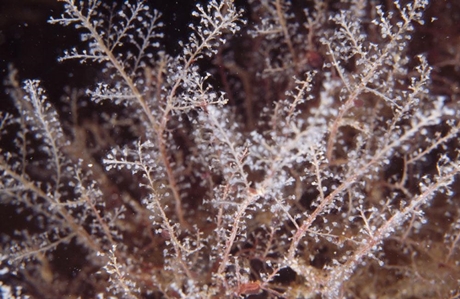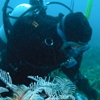General Description
Colony of individual polyps (hydranths) joined by root-like network of tubular stolons at the base. Colony shape is tree-like or bushy (arborescent). Colour: white to greenish, sometimes with internal patches of black zooxanthallae (microscopic plants) living in the coensosarc. Up to 8 cm long.
Biology
Colonies of this species commence growth in winter and become fertile late spring.
Habitat
On sponges or hanging down in curtains in crevices in clear ocean waters.
Reefs
Distribution guide
Southern Australia.
Species Group
Depth
Water Column
Max Size
8 cm
Diet
Plankton or Particles
Harmful
Generally not harmful but still able to sting bare skin.
Commercial Species
No
Identify
Conservation Status
- DSE Advisory List : Not listed
- EPBC Act 1999 : Not listed
- IUCN Red List : Not listed





